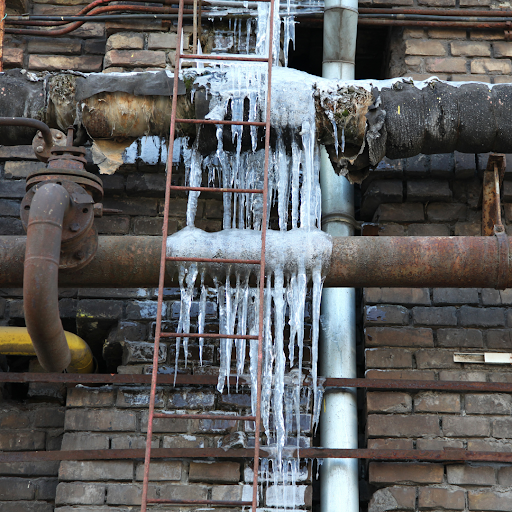Crucial Advice to Prevent Frozen Plumbing in Cold Weather: Professional Insights
Crucial Advice to Prevent Frozen Plumbing in Cold Weather: Professional Insights
Blog Article
Right here down the page you will find a lot of awesome additional info with regards to Preventing and dealing with frozen pipes.

Winter can wreak havoc on your plumbing, particularly by freezing pipes. Here's how to prevent it from happening and what to do if it does.
Intro
As temperature levels decline, the threat of icy pipelines boosts, potentially resulting in expensive repairs and water damage. Recognizing how to prevent icy pipelines is important for property owners in cold environments.
Prevention Tips
Shielding prone pipelines
Wrap pipes in insulation sleeves or make use of warmth tape to safeguard them from freezing temperature levels. Focus on pipelines in unheated or exterior areas of the home.
Home heating strategies
Maintain interior rooms properly heated up, specifically locations with pipes. Open up closet doors to permit cozy air to flow around pipelines under sinks.
Just how to recognize icy pipes
Search for decreased water flow from taps, uncommon smells or noises from pipes, and visible frost on revealed pipelines.
Long-Term Solutions
Structural changes
Think about rerouting pipes away from outside wall surfaces or unheated locations. Add added insulation to attic rooms, basements, and crawl spaces.
Updating insulation
Invest in high-quality insulation for pipelines, attics, and wall surfaces. Appropriate insulation aids preserve consistent temperature levels and reduces the threat of frozen pipelines.
Securing Outdoor Pipes
Yard hose pipes and exterior faucets
Detach and drain pipes garden pipes prior to winter. Set up frost-proof spigots or cover outside taps with insulated caps.
Comprehending Icy Pipelines
What creates pipes to freeze?
Pipes freeze when exposed to temperatures below 32 ° F (0 ° C) for prolonged durations. As water inside the pipelines freezes, it expands, taxing the pipeline walls and potentially triggering them to break.
Threats and problems
Icy pipelines can bring about supply of water interruptions, property damages, and pricey repairs. Ruptured pipelines can flood homes and cause extensive architectural damages.
Signs of Frozen Pipes
Recognizing icy pipes early can stop them from bursting.
What to Do If Your Pipelines Freeze
Immediate activities to take
If you suspect icy pipes, maintain faucets open up to eliminate pressure as the ice thaws. Make use of a hairdryer or towels soaked in warm water to thaw pipes gradually.
Conclusion
Stopping frozen pipes calls for proactive procedures and fast feedbacks. By understanding the reasons, indicators, and preventive measures, property owners can secure their plumbing during cold weather.
6 Proven Ways to Prevent Frozen Pipes and Protect Your Home
Disconnect and Drain Garden Hoses
Before winter arrives, start by disconnecting your garden hoses and draining any remaining water. Close the shut-off valves that supply outdoor hose bibs and leave the outdoor faucet open to allow any residual water to drain. For extra protection, consider using faucet covers throughout the colder months. It’s also important to drain water from any sprinkler supply lines following the manufacturer’s directions.
Insulate Exposed Pipes
Insulating your pipes is an effective way to prevent freezing. Pipe insulation is readily available at home improvement stores and is relatively inexpensive. Pay close attention to pipes in unheated areas such as the attic, basement, crawl spaces, or garage. Apply foam insulation generously to create a buffer against the cold. You can also wrap your pipes in heat tape or thermostat-controlled heat cables for added warmth.
Seal Air Leaks
Inspect your home for any cracks or openings that could let in cold air. Seal any holes around the piping in interior or exterior walls, as well as the sill plates where your home rests on its foundation. Additionally, make sure to keep your garage door closed unless you’re entering or exiting. Leaving it open creates a significant air leak that can lead to frozen pipes.
Allow Warm Air Circulation
During cold snaps, it’s essential to allow warm air to circulate evenly throughout your home. Leave interior doors ajar to promote better airflow. Open kitchen and bathroom cabinets to help distribute heat consistently around the rooms. If you have small children or pets, be sure to remove any household chemicals or potentially harmful cleaners from open cabinets for safety.
Let Faucets Drip
A small trickle of water can make a big difference in preventing ice formation inside your pipes. When temperatures drop significantly, start a drip of water from all faucets served by exposed pipes. This continuous flow helps prevent the water from freezing. Additionally, running a few faucets slightly can relieve pressure inside the pipes, reducing the chances of a rupture if the water inside does freeze.
https://choateshvac.com/6-proven-ways-to-prevent-frozen-pipes-and-protect-your-home/

I found that write up on How to Prevent Your Pipes From Freezing when browsing on the internet. Enjoyed reading our blog entry? Please share it. Help another person check it out. Kudos for your time. Don't hesitate to check our site back soon.
Call Today Report this page